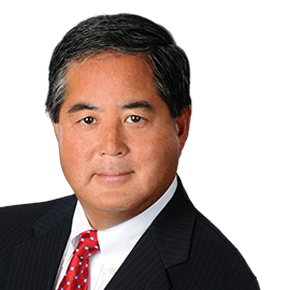
Fiscal minefield
Investment in Passive Foreign Investment Companies (“PFICs”) Creates Potential Tax Pitfalls for U.S. Investment Funds.
The U.S. economy, while still the largest, is shrinking as a percentage of the global economy. This has created opportunities for U.S. investment funds (“funds”) to diversify and broaden their portfolios by investing in corporations located in offshore jurisdictions. While these investments can produce attractive economic returns, funds need to be wary of the tax pitfalls they may encounter. Unlike investments in U.S. corporations, where the fund is taxed only when it receives a distribution from, or sells shares of, the corporation, investments in offshore corporations that are classified as passive foreign investment companies (“PFICs”) face a potentially punitive tax regime.
The Three PFIC Taxation Regimes and Advantages of the Qualified Electing Fund Regime
The PFIC rules were implemented to prevent U.S. taxpayers from deferring tax on passive income earned in low tax jurisdictions. Absent an election to tax the PFIC as a Qualified Electing Fund (“QEF”) or under the mark-to-market (“MTM”) rules (discussed below), PFICs are taxed under the default (or excess distribution) regime. Under this regime, if a taxpayer receives a distribution or there is a sale of shares, the income or gain is treated as ordinary income and taxed at the highest ordinary marginal tax rate applicable in to each year of the taxpayer’s holding period. In addition, interest is charged on tax allocated to prior tax years. The default regime is the most punitive of the regimes applicable to a taxpayer.
What is a PFIC?
A PFIC is a foreign corporation that meets either an income test or an asset test. The income test is met if 75% or more of the corporation’s gross income is passive, such as interest, dividends or capital gains. The asset test is met if 50% or more of the average value of the corporation’s assets produce passive income. Should either of these two tests be met, the corporation is treated as a PFIC.
Taxpayers wishing to avoid this punitive regime can avail themselves of either one of two options. If the PFIC stock is marketable (traded on a public exchange), then an election can be made to adopt mark-to-market (MTM) accounting to calculate the market value of the PFIC stock and include unrealized gains as income annually. According to Ecovis’ team of experts, this income is included regardless of whether the taxpayer receives a distribution or sells shares. The inclusion amount is calculated by comparing the change in market value from the beginning of the year to the end of the year.
 Investments in offshore corporations that are classified as passive foreign investment companies face a potentially punitive tax regime.
Investments in offshore corporations that are classified as passive foreign investment companies face a potentially punitive tax regime.
The second option is for the taxpayer to make the qualified electing fund (QEF) election. Most taxpayers investing in PFICs will achieve the best tax results by electing QEF treatment. This election does not require the corporation to be traded on a public exchange. It generally requires the offshore corporation to issue a PFIC annual information statement to the taxpayer. This statement must provide, among other requirements, certain information to allow US investors to calculate their share of gains or losses under US tax rules, as well as investor distribution information.
Taxpayers wishing to avoid this punitive regime can avail themselves of either one of two options: MTM or QEF.
The offshore corporation must provide taxpayers with sufficient information with regard to their ordinary income and capital gains to enable the taxpayers to make the QEF election. Should the offshore corporation fail to provide either the statement or sufficient information for taxpayers to calculate taxable income, the taxpayers generally lose their ability to make the QEF election.
Conclusion
Foreign investment funds are more attractive to US investors if such funds are able to provide relevant QEF reporting information with respect to PFIC investments on a timely basis. This would better enable US investors to comply with US QEF reporting requirements.


